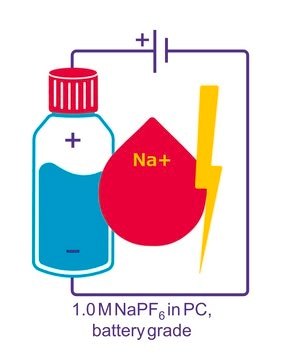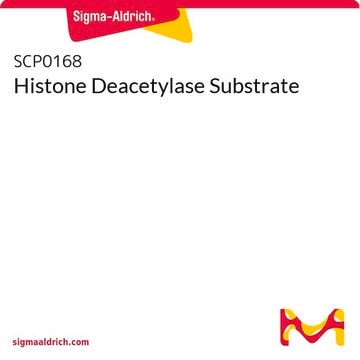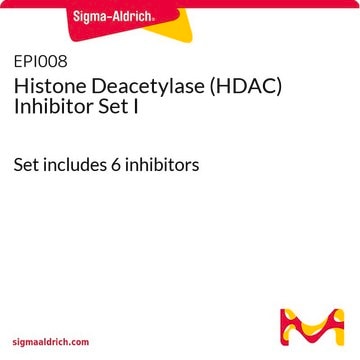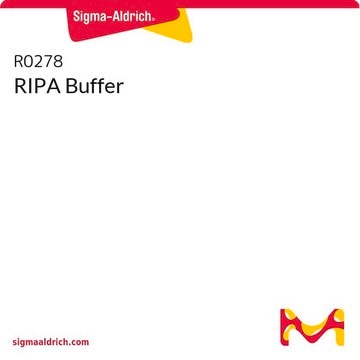The [R-H-K-K(Ac)-AFC] substrate is not specific to just the HDAC3. It is recommended to purify the HDAC3 enzyme if necessary.
EPI004
Histone Deacetylase 3 (HDAC3) Activity Assay Kit
100 assays in 96 well plates
Synonyme(s) :
Histone deacetylase assay
About This Item
Produits recommandés
Utilisation
100 assays in 96 well plates
Numéro d'accès NCBI
Conditions d'expédition
wet ice
Température de stockage
−20°C
Informations sur le gène
human ... HDAC3(8841)
mouse ... HDAC3(15183)
Description générale
With Sigma′s HDAC3 Activity Assay Kit, HDAC3 present in a test sample will act with the supplied Developer, to deacetylate and then cleave the HDAC3 Substrate [R-H-K-K(Ac)-AFC]. This activity will release the quenched fluorescent group, AFC, which can be detected at Em/Ex = 380/500 nm. Trichostatin A is an HDAC inhibitor included in the kit to verify HDAC3 activity. The kit provides a rapid, simple, sensitive and reliable test. It is suitable for either individual tests or high throughput assays, from nuclear extracts, purified, or immunoprecipitated HDAC3, and from native, recombinant, or genetically modified HDAC3.
Caractéristiques et avantages
- Simple, sensitive, and reliable assay
- Simple procedure; takes ~60 min
- Utilizes fluorometric methods
- Sample type: cell and tissue lysates, plasma and serum, other biological fluids
- Species reactivity: mammalian
- Suitable for individual tests or high throughput assays and kinetic studies
- Convenient 96-well microplate format
- Suitable for high throughput measurement of HDAC3 activity in purified, immunoprecipitated and recombinant or genetically modified HDAC3 samples
Produit(s) apparenté(s)
Code de la classe de stockage
10 - Combustible liquids
Classe de danger pour l'eau (WGK)
WGK 3
Point d'éclair (°F)
188.6 °F - closed cup
Point d'éclair (°C)
87 °C - closed cup
Faites votre choix parmi les versions les plus récentes :
Certificats d'analyse (COA)
It looks like we've run into a problem, but you can still download Certificates of Analysis from our Documents section.
Si vous avez besoin d'assistance, veuillez contacter Service Clients
Déjà en possession de ce produit ?
Retrouvez la documentation relative aux produits que vous avez récemment achetés dans la Bibliothèque de documents.
-
I would like to understand if the kit substrate is specific for HDAC3. Assuming that I would use as input a nuclear extract (rich in several nuclear histone deacetylases), would this substrate be catalyzed by all HDACs or doe it only interact with HDAC3?
1 answer-
Helpful?
-
Active Filters
Notre équipe de scientifiques dispose d'une expérience dans tous les secteurs de la recherche, notamment en sciences de la vie, science des matériaux, synthèse chimique, chromatographie, analyse et dans de nombreux autres domaines..
Contacter notre Service technique